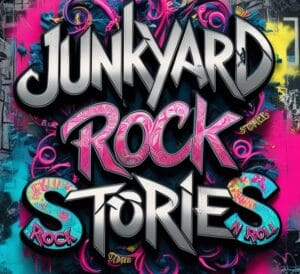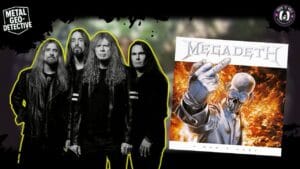Ugly Kid Joe – Uglier Than They Used Ta Be (2015) Review
After reuniting in 2010 and releasing the EP Stairway To Hell in 2012, California rockers Ugly Kid Joe decided to treat their fans to a brand-new full album – exactly nineteen years after their last one, Motel California. Once dubbed “the most disliked American band,” as the members themselves jokingly used to say, born from the ruins of the Los Angeles glam scene with a special parodic attitude toward bands like Pretty Boy Floyd (the name Ugly Kid Joe speaks for itself), completely different in appearance and extremely sarcastic in their musical approach, they offered unforgettable hits back in 1992 such as Cats In The Cradle, Everything About You, So Damn Cool, and more. Today, Whitfield Crane and the crew return to the scene older, more serious, but also “uglier” than ever—judging by the title of this year’s release, Uglier Than It Used Ta Be, which represents a kind of continuation of the story from the ’90s and their legendary debut album America’s Least Wanted, which reached platinum status in the United States.
As for the band lineup, it has remained unchanged since their last album in 1996. However, the recording of the latest release involved as many as seven musicians: Whitfield Crane – vocals, Klaus Eichstadt – guitars, Sonny Mayo – guitars, Shannon Larkin – drums, Zac Morris – drums, Cordell Crockett – bass, Dave Fortman – guitars, joined by Phil Campbell of the legendary Motörhead. The album contains 11 songs, two of which are covers, and it was recorded under the direction of Dave Fortman (Slipknot, Godsmack, Evanescence) in Louisiana.
Such a large team of people and this method of working are not something we come across very often. However, this unusual approach is exactly what led Uglier Than It Used Ta Be to become one of the best releases the band has produced in their career. The seven-member setup turned out to be an excellent recipe. Above all, the album doesn’t stray from what Ugly Kid Joe truly is. The band’s uniqueness has remained intact even after all these years since their last release, where not even a long hiatus had any impact. Proof of that is the 2012 EP, with which the “Uglies” seemed to only announce the “musical storm” they were preparing next.
The album opens with Hell Ain’t Hard To Find, whose Foo Fighters-like intro slowly builds into a proper heavy rocker in the chorus. What immediately stands out after the first lines is Whitfield Crane’s voice—never more serious and stable, yet still carrying the unmistakable signature tone from the band’s early years. A great track to start with, featuring the chorus message: “I sold my soul to the other side, I’m a one man rollercoaster ride.” Next up, Let The Needle Play begins with an irresistible classic L.A. heavy riff that leads into a very catchy chorus—the kind of music that instantly sticks. The song deals with a painful emotional breakup, compared to the old “gramophone” way of listening to music. Definitely one of the best songs on the album. Third in line, Bad Seed, belongs to the Pantera-styled group of tracks—a sound that was never foreign to the Uglies. A great groovy riff at the start and Crane’s slightly stoner-rock vocal give the song the perfect dose of heaviness, putting it shoulder to shoulder with So Damn Cool or Neighbor from the debut.
As usual, you can’t expect only heavy rock tunes from the Ugly crew, so the change comes with Mirror Of The Man. Chilly fresh acoustic guitars and a deep, rumbling bass create a kind of Alice In Chains-like atmosphere colored by beautiful guitar melodies. It seems that this is where you can truly feel the advantage of the expanded seven-member lineup that worked on the album. Another one of the top tracks. Fifth in order, She Is Already Gone, returns to heavier tones and also ranks among the stronger songs. The album’s original material continues with the soothing ballad Nothing Ever Changes, followed by the sleazy L.A. GNR-style My Old Man, in seventh position, featuring Phil Campbell on drums. Next comes Under The Bottom, the second-longest song on the album—a mid-tempo track combining the acoustic-rock feel of earlier songs with a mystical grunge vibe that can be heard in many of the band’s works. This blending of different musical styles is one of UKJ’s trademarks, and the grunge influence can easily be attributed to the era in which the band originated and the enormous impact that the genre had at the time.
In the final part of the record we find the two mentioned covers. The first is the legendary Ace Of Spades by Motörhead. Why this song was chosen is unknown. Covers are usually a double-edged sword. It’s very difficult to “cover” someone’s song while preserving its uniqueness and originality—especially with well-known hits. Often, it pays off to cover a lesser-known song by a favorite band. As it stands, their Ace Of Spades turned out to be just an ordinary cover, nothing more. In the tenth spot we have the last original track on the album, The Enemy, which is also the longest, clocking in at 6:07. The song starts gently with acoustic guitars and a very catchy, pleasant melody—a seemingly fine ballad to close the album. But… just when everyone thinks it’s over, around the 4:50 mark a short pause appears, after which Ugly Kid Joe unleash everything they’ve got—guitars, bass, drums, and Whit’s raspy screaming. Now that is the right way to end things—with attitude and rock spirit. However, after that comes another cover, this time Papa Was a Rolling Stone by The Temptations. A slightly better cover than the previous one, but still, it feels like the album could’ve done without it. The explosive ending of The Enemy sounded much more convincing and sincere. Still, with this classic, we reach the end of this interesting release.
All in all, when the dust settles, the album stands as an exceptional release. The only thing missing—what could be considered a small flaw—is the lack of a hit song on the level of Everything About You or Cats In The Cradle. That will likely be the main criticism coming from the audience. Musically, the album is professionally executed. Whit’s vocals are better than ever—more mature and in a way more diverse. The guitar riffs vary widely across genres, from heavy rock to melodic acoustic passages. Bass and drums sound compact, despite the number of musicians involved in the recording process.
In the end, it’s important to point out that Ugly Kid Joe are no longer the young guys from the early ’90s. This is now a group of seasoned, mature musicians—although with much less hair, which isn’t really a flaw. Emphasizing the contrast between youth and maturity is one of the key themes for this band and for this release. For example, Everything About You radiates that youthful, boyish energy—a product of its time—while the new album contains no such songs. Yet, the passing of time hasn’t damaged the band’s charm or success. Every track on the album carries something unique that the listener will not want to skip. That certain attraction and charisma the band has had from the beginning remains intact. Long-time fans will surely enjoy the album, and it will likely attract new ones as well. In any case, it’s wonderful to hear that Ugly Kid Joe are back. Hopefully, a more active musical period lies ahead. And hopefully, of course, another meeting—since the last one was very poorly attended. All in all, thumbs up (and horns too), the ugly kid Joe is back in action!
This is a translated version of the article. The original was posted on old Junkyard Rock Stories on December 6th 2015.,
Sign Up For Regular Updates From Junkyard World




